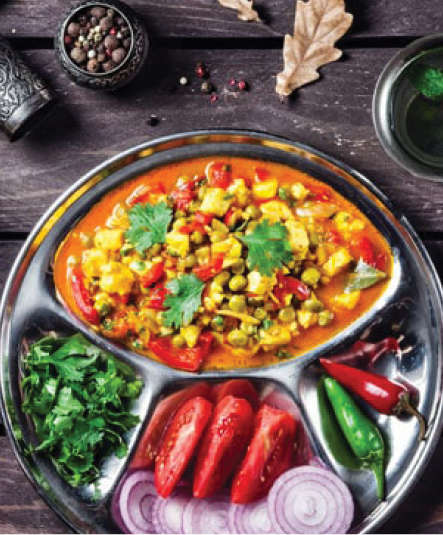


“Let food be thy medicine and medicine be thy food.” is a well-known quote by Hippocrates, the father of medicine. “Food as medicine” is emerging as an important concept in managing health and wellness. This concept emphasises prioritising food, diet, and eating habits in an individual’s health management with the objective of either preventing or reducing symptoms of an ailment or reversing a disease condition. However, food should not be used as a replacement for medicine. Indian food has been served during disease conditions. The Indian dish moong dal khichdi for someone recovering from an illness is preferred due to its easy digestibility. When it is a perfect blend of protein, carbohydrates, and healthy fats (when cooked in ghee), it becomes a complete and balanced meal. Festivals in India are incomplete without food. Special dishes traditionally prepared during festivals have many health benefits the same are made as deity offerings and have a traditional science.
Traditional festival foods use ingredients that are fresh and have little or no processing and no additives. Foods prepared for festivals are seasonal foods and hence best for consumption. As per the mythology of Ganesha, after consuming the demon Anasur, he faced a lot of irritation and acidity, attributable to a heavy meal. When everything else failed, durvas were offered to him, which gave him relief. Durva grass assists in maintaining the alkalinity of the body; thereby it acts as a natural blood purifier.
Additionally, it is effective against blood loss during injury, excessive blood flow during menstruation, nose bleeding, et cetera. It increases the growth of RBC (red blood cells), ultimately raising haemoglobin levels. It is mentioned in a document that an Indian physician, Sushruta, used ladoos as an antiseptic to treat his surgical patients. He used a combination of food ingredients with nutritional properties like sesame seeds, jaggery, and peanuts to make ladoos that we today fondly call til ladoo. They are commonly used during several festivals, notably the Makar Sankranti, and are considered a super food for winter. Ragi Coconut Ladoo is nutritionally rich due to the high protein and mineral value present in its main ingredient, Ragi. Boondi Laddu is nutritious and contains a combination of beneficial ingredients and is a good source of carbohydrates and vital proteins.
The ghee is also rich in conjugated linoleic acid (CLA) and vitamins A, K2, and E. These are served during the festival season. The besan laddoos served during the festival season have a low glycaemic index and are very rich in complex carbohydrates. The glycaemic index may be able to satiate sweet cravings without too many calories. This helps in weight loss. Sabudana is used during the fasting season. Sabudana is a good source of energy, easy to digest, and prevents constipation. It is a rich source of carbohydrates and has a cooling effect on the body. Sabudana khichdi with vegetables and peanuts makes it a good healthy food option for pregnant women.
To conclude, Indian food, across all regions, is balanced, extremely beneficial, and nutritionally rich, containing antioxidants, essential minerals, and vitamins that help in digestion, speed up metabolism, and improve cholesterol and blood glucose levels. The ingredients build immunity, support brain function, sharpen memory, and reduce inflammation. Indian spices and herbs have medicinal and therapeutic values-apart from imparting delicious taste, flavour, and aroma. Even the festival food is designed for an enjoyable and healthy season.